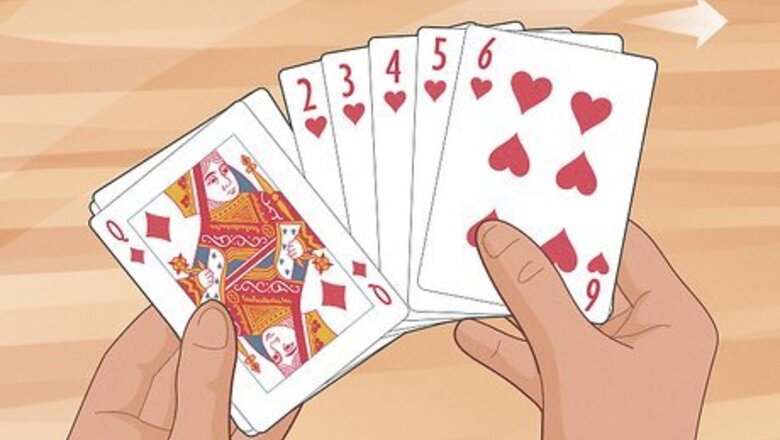
views
- Player count: 2–8, though 5 is standard
- Required Materials: Playing cards, paper or tokens to keep track of scores
- Objective: Earn a total of 61 or more points as a team by playing high-ranking cards during a round.
Setup

Remove the 2–6 of each suit from a deck of cards. Sheepshead uses 32 cards instead of a standard deck. Take out all of the cards numbered 2–6 and put them back in the box.
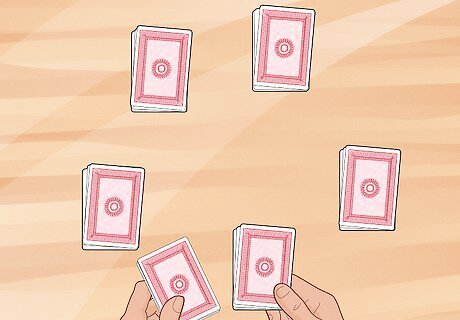
Deal 2–3 cards at a time to each player. Choose a dealer at random to shuffle the cards. Starting with the player on their left, the dealer gives either 2 or 3 cards to each person. For playing a standard 5-player game, deal the cards out so each player has 6 cards in their hand. While it’s most common to play sheepshead with 5 players, we’ll cover the different variations based on player counts later on.
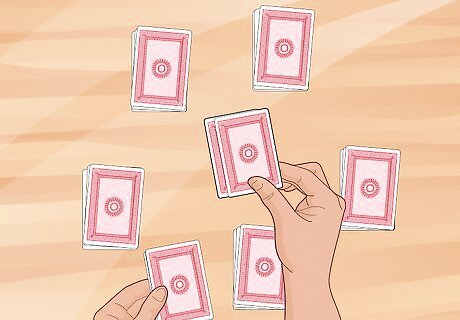
Place 2 cards face-down to form the blind. At any point during the deal, put 2 cards face-down in the middle of the table. These cards are called the “blind” and may be picked up by another player later in the game. Avoid using the last 2 cards in the deck to form the blind because it’s sometimes considered poor form by other players.
Card Ranks and Point Values

Trump cards The trump cards are the most powerful cards in the game and they contain the 4 queens, 4 jacks, and the remaining diamonds in the deck. From highest to lowest rank, the trump suit is: Q ♣, Q ♠, Q ♥, Q ♦, J ♣, J ♠, J ♥, J ♦, A ♦, 10 ♦, K ♦, 9 ♦, 8 ♦, 7 ♦
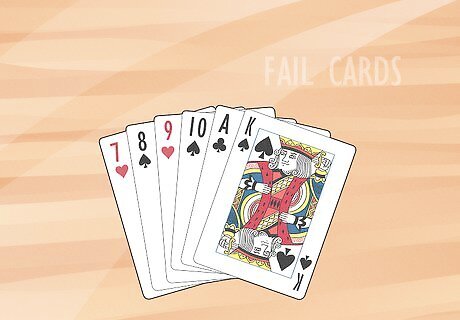
Fail cards Any clubs, spades, or hearts that aren’t trump are known as “fail suits.” For each fail suit, the cards ranked from highest to lowest are: A, 10, K, 9, 8, 7.
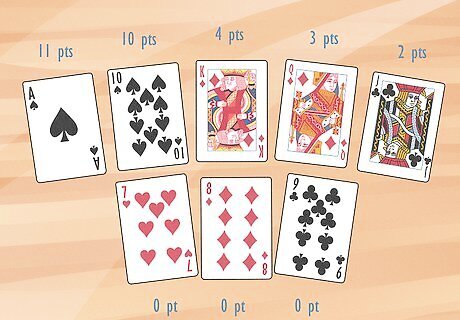
Card point values Each card is worth a different number of points at the end of the game when players win them during the round. The cards and their point values are: A: 11 points 10: 10 points K: 4 points Q: 3 points J: 2 points 9, 8, and 7: 0 points There are 120 total points in the deck.
Picking Cards
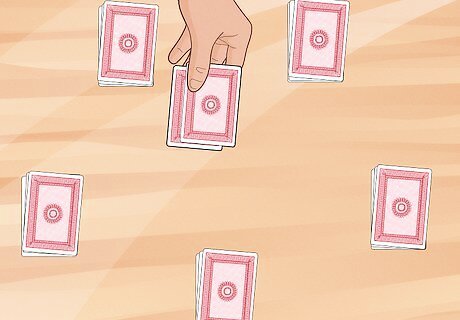
Take turns deciding if players want to pick up the blind. Starting with the player to the left of the dealer, a player may choose to take the blind or pass it to the next person. If someone chooses to take the blind, they become the “picker” and take the 2 face-down cards into their hand. Then, they set 2 cards face-down in front of them to “bury” them. Strategy Tip: If you have 5 cards of the trump suit or have 1 Queen and 3 other trump cards, pick up the blind because you have a strong hand. Taking the blind signals that you feel confident that you’re able to win 61 or more points during the round and that you want to compete against the other players. If no one takes the blind, then players work individually to try earning the least amount of points during the round.

Name a fail suit after picking up the blind to choose a partner. After the picker takes the blind and buries cards, they can say any fail suit that they currently have in their hand. The person holding the Ace of that suit becomes their partner. The remaining players form the opposing team. Whoever is holding the Ace of the called suit does not reveal themselves to the picker right away. The picker only learns who their partner is after the called Ace has been played later during the round. Variation: Instead of calling a fail suit, the picker’s partner is whoever has the Jack of Diamonds in their hand.
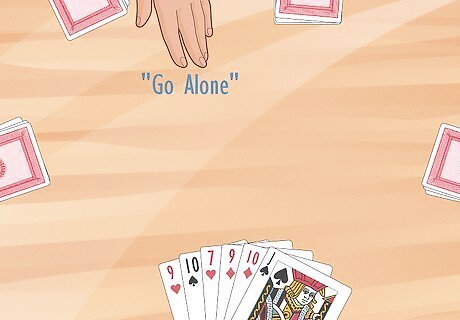
Choose to “go alone” to play without a partner. If the picker feels confident that they can earn 61 or more points in their hand alone, they can announce that they want to go alone. They’ll play against the other 4 people at the table without any help. Going alone doesn’t give any bonus points at the end of the round, but it does prevent a partner player from earning points. Strategy Tip: Only choose to go alone if all of your cards are high-ranking in the trump suit because you’ll have the best opportunity of winning the round.
Gameplay
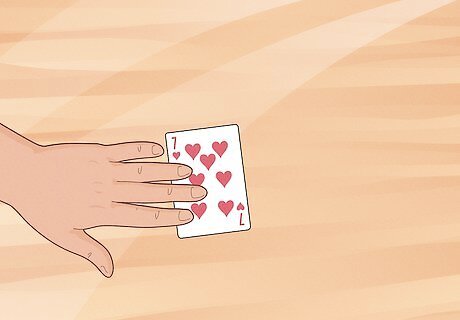
The starting player plays 1 card to lead the first trick. A “trick” is a single turn of the game where each person plays 1 card. For the first trick, the person to the left of the dealer starts. They choose any card from their hand and play it face-up to the middle of the table.
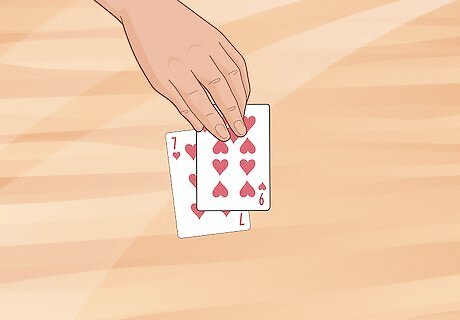
Other players play a card of the same suit if they’re able. Players take turns clockwise around the table adding 1 card to the trick. If they have a card of the same suit as the lead card, they must play it (also known as “following suit”). If they do not have a card matching the lead suit, they can play any card from their hand. Trump cards are considered their own suit, so if the lead card was a 7 of Spades, a player could not follow with the Queen of Spades if they also held the 8 of Spades.

Win the trick for playing the card with the highest rank. Compare the ranks of the cards that were played into the trick. Whoever played the highest-ranking trump card to the trick wins. If there were no trump cards, whoever played the highest rank of the led suit wins. The winner takes all the cards from the trick and places them face-down in front of them.
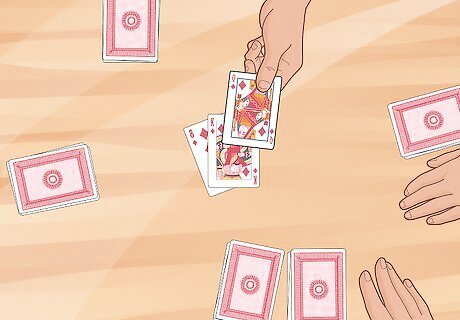
Continue playing tricks until players are out of cards. Whoever won the previous turn plays the first card to the next trick. Continue playing tricks until everyone has played all of the cards from their hand.
Scoring and Winning
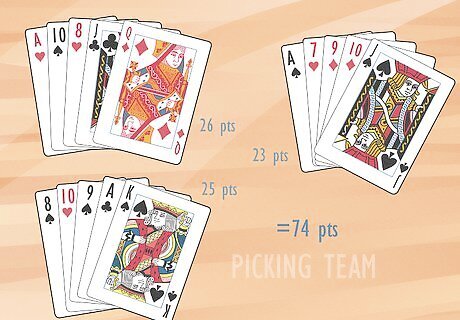
Score as the picking team if won cards are worth 61 points or more. Count the point values of the cards won by the picker and their partner. If they earned at least 61 points, they’re considered the winners for the round and earn personal points based on their total score. For 61–90 points, the picker earns 2 points, their partner earns 1 point, and all other players lose 1 point. For 91–119 points, the picking team “schneiders” the opposing team. The picker earns 4 points, their partner earns 2 points, and all other players lose 2 points. If the picking team wins all the tricks and earns 120 points, the picker gains 6 points, their partner earns 3 points, and every other player loses 3 points.
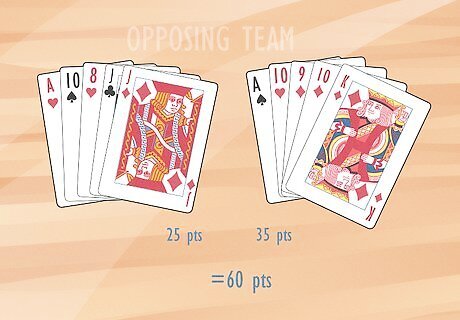
Score as the opposing team for winning cards worth 60 points or more. If the opposing team earns more points than the picker and their partner, they win the round instead. The personal points earned depend on the value of the won cards. For 60–90 points, the players on the opposing team earn 1 point each while the picker and their partner each lose 1 point. For 91–119 points, the opposing team “schneiders” the picking team. The team earns 2 points each, the picker loses 4 points, and their partner loses 2 points. If the opposing team wins all the tricks, each member earns 3 points. The picker loses 9 points but their partner doesn’t lose any points.

Play a set number of rounds to see who gets the highest score. There is no official number of rounds or total points that trigger the end of the game, so decide how many the group wants to play. After all the rounds, whichever player has the highest score wins the game. You may also choose a number of points a player has to reach to win the game instead of a set number of rounds.
Strategy

Lead with the trump suit as the picker or partner. When you’re on the picking team, leading with trump cards forces the other people to play the ones in their hands. After the opposing team is out of trump cards, you’ll be able to win tricks with the trump cards you still have in your hand.

Start with the called suit as the opposing team. If you’re opposing the picker and partner, try to lead right away with the fail suit the picker called out. That way, the opposing team can find out who the picker’s partner is right away. Leading with a fail suit you have a lot of cards in is also a great tactic because your teammate will be able to play a trump card and win the trick.
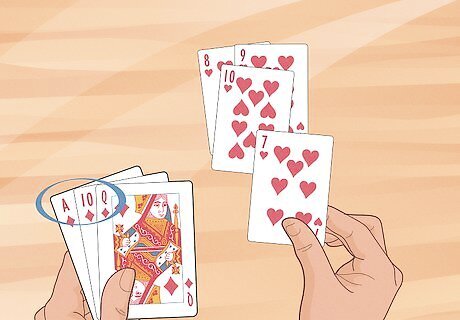
Save high-ranked cards for later in the round. If you have the choice between playing a trump card or a card with a higher point value, save the trump card for later in the round. That way, you’re more likely to win tricks later on. Keep mental track of which trump cards have been played so you have a better idea of what your opponent could play on their turn.
Player Count Variations
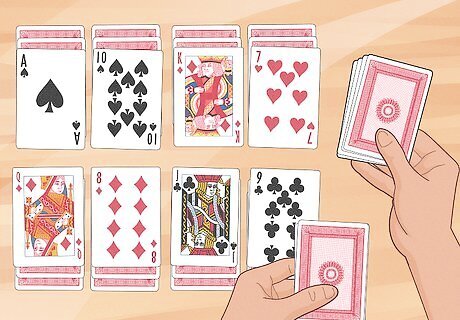
Two player rules Deal 4 cards to each player in a face-down row. Place another face-down card into each stack. Then, deal a face-up card on top of each stack. Give each player 4 cards for their hand. Players take turns playing a card from their hand or one that’s face-up in their row. As soon as a player uses a card from their row, they flip over the next face-down card. Sheepshead with 2 players isn’t as strategic since players don’t know what cards they have hidden in their row.
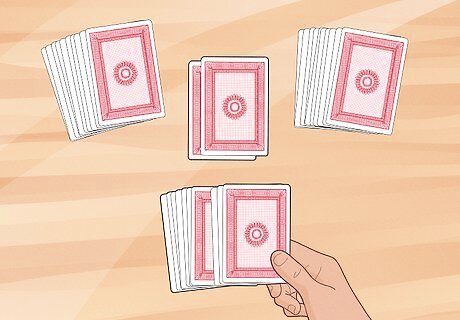
Three player rules Deal out 10 cards to each player and set 2 face-down in the blind. Whoever becomes the picker takes the blind and buries 2 cards from their hand. They compete alone against the other 2 players for the majority of the points.

Four player rules Deal 7 cards to each person and put 4 face-down into the blind. Whoever becomes the picker takes all 4 blind cards into their hand and then has to bury 4 cards. The picker plays without a partner against the other 3 players.

Six player rules Deal 5 cards to each player and set 2 face-down in the blind. Once someone chooses to be the picker, the person to their right and the person holding the Jack of Diamonds become their partners. If the picker or the person to their right holds the Jack of Diamonds, then the game is played 2 versus 4 instead of 3 versus 3.

Seven player rules Deal out 4 cards to each player and put 4 face-down into the blind on the table. Whoever becomes the picker takes 2 of the blind cards into their hand and buries 2 cards. Then, they roll a die and count players clockwise to determine one partner, who picks up the remaining blind cards. The picker's second partner is the player holding the Jack of Diamonds. If the picker or the person selected randomly has the Jack of Diamonds in their hand, then they are partners playing against the other 5 players.

Eight player rules Deal out the cards evenly so each player has 4 cards and there are no cards in the blind. The players that have the Queen of Spades and Queen of Clubs are partners for the round and play against the other 6 people.




















Comments
0 comment